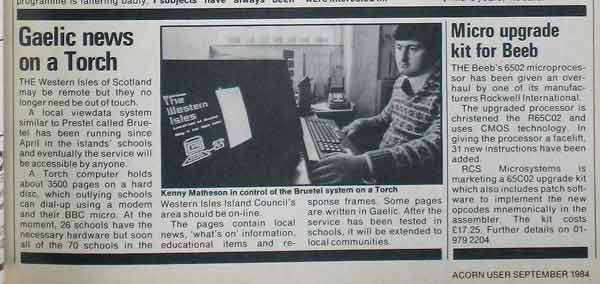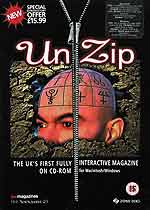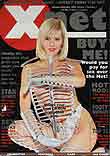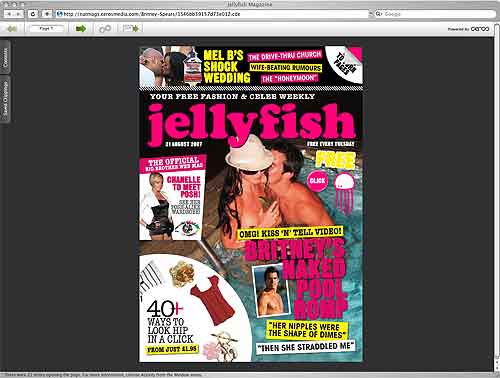will we still be reading magazines in 20 years time?
if so, throgh what medium? e.g tv home entertainment system, mobile phone, on a tablet, personal computer.
will the number of magazine readers increase or decrease due to this change, if either?
will the percentage of youth readers increase or decrease due to this change, if either? how will this effect social attitudes in the youth population?
in general, how will the content of magazines have changed? e.g more explicit, eduactional.
Friday, 24 December 2010
Magazine industry timeline + digital magazine timeline
1586 Josse Amman, a Swiss painter, publishes plates on the fashions of the day, with the title Gynasceum, sive Theatrum Mulierum ... (The Gynasceum or Theatre of Women, in which are reproduced by engraving the female costumes of all the nations of Europe). Published in Frankfort in Latin; regarded as the first fashion magazine 1796 German Alois Senefelder develops lithography to produce high-quality printed images 1839 Fox Talbot produces photographs from negatives 1861 First colour photography 1882 Photos sent by wire 1892 Four colour rotary press 1922 British Broadcasting Corporation formed as commercial radio broadcaster 1928 Baird beams TV image from UK to US 1936- BBC launches the world's first regular television service from Alexandra Palace in London. The Radio Times runs a "Television Number" in London edition only. 1962 The Bolton Evening News is the first UK paper to print colour advertising. The pages were produced by Martlet Press in London 1982 Computer magazines, such as Acorn User at Addison-Wesley in London, start to use e-mail systems and online bulletin boards, in this case Dialcom 1983 Emap launches Micronet online bulletin board, which reaches 1m subscribers. Magazines and individuals set up own pages on the Prestel-based system. Thousands of computer users run own boards from home using BBC Micros and modems. 1985 Postscript-based software, such as Aldus Pagemaker and Adobe Illustrator running on the Apple Macintosh, allied to laser printers, herald the advent of desktop publishing. This revolutionises production of magazines and newspapers DIGITAL MAGAZINE HISTORY OVER PAST 30 YEARS
| ||||||||||||||||||||||||||||||||||||||||||||||||||||||||||||||||||||||||||||||||||||||||||||||||||||||||||||||||||||||||||||||||||||||||||||||||||||||||||||||||||||||||||||||||||||||||||||||||||||||||||||||||||||||||||||||||||
Tuesday, 21 December 2010
NME FACTS
KEY STATS
Male: 74%
Female 26%
Median age: 23
Student 42%
ABC1: 68%
Circulation: 33,875
Readership: 325,000
NME has become a truly unique multi-platform media proposition. Across the magazine, nme.com, NMETV, NME Radio and the brand's live events and awards, NME reaches over one million music fans every week. NME is the longest published and most respected music weekly in the world. Every week it gives its readers the most exciting, most authoritative coverage of the very best in contemporary music, including award winning features, the latest releases, live reviews, the definitive guide to the best new bands in its Radar section, as well as a regular look back through the magazine's incredible 58 year heritage.
Not surprisingly NME readers are completely obsessed by music. Reader research has demonstrated that they rely on the editorial and the ads to keep them up to date
with new music. This knowledge then makes them the authority in music in their peer group.
Monday, 13 December 2010
NME
The paper's first issue was published on 7 March 1952 after the Musical Express and Accordion Weekly was bought by London music promoter Maurice Kin, and relaunched as the New Musical Express. It was initially published in a non-glossy tabloid format on standard newsprint. On 14 November 1952, taking its cue from the U.S. magazine Billboard, it created the first UK Singles Chart.
1960s- NME sales were healthy with the paper selling as many as 200,000 issues per week, making it one of the UK's biggest sellers.
1970s- By the early 1970s NME had lost ground to the Melody Maker as its coverage of music had failed to keep pace with the development of rock music, particularly during the early years of psychedelia and progressive rock. In early 1972 the paper found itself on the verge of closure by its owners IPC (who had bought the paper from Kinn in 1963). According to Nick Kent (soon to play a prominent part in the paper's revival):
After sales had plummeted to 60,000 and a review of guitar instrumentalist Duanne Eddy had been printed which began with the immortal words 'On this, his 35th album, we find Duane in as good as voice as ever,' the NME had been told to rethink its policies or die on the vine.
1980s- Some commented at this time that the NME had become less intellectual in its writing style and less inventive musically. Initially, NME writers themselves were ill at ease with the new regime, with most signing a letter of no confidence in Alan Lewis shortly after he took over. However, this new direction for the NME proved to be a commercial success and the paper brought in new writers such as Andrew Collins, Stuart Maconie, Mary Anne Hobbs and Steve Lamcq to give it a stronger identity and sense of direction.
1990s-Although the period from 1991 to 1993 was dominated by American bands like Nirvana, British bands were not ignored.In April 1994 Nirvana frontman Kurt Cobain was found dead, a story which affected not only his fans and readers of the NME, but would see a massive change in British music. Grunge was about to be replaced by Britpop,a new form of music influenced by British music of the 1960s and British culture. The phrase was coined by NME after the band Blur released their album Parklife in the same month of Cobain's death. Britpop began to fill the musical and cultural void left after Cobain's death, and Blur's success, along with the rise of a new group from Manchester called Oasis saw Britpop explode for the rest of 1994.
20000s- From the issue of 21 March 1998 onwards, the paper has no longer been printed on newsIn October 2006 NME launched an Irish version of the magazine called NME Ireland. This coincided with the launch of Club NME in Dublin. Dublin-based band Humanzi were the first to appear on the cover of NME Ireland. Poor sales in the Republic of Ireland resulted from competition from market leader Hot Press and free music magazines Analogue Magazine, Mongrel Magazine and State Magazine. This resulted in the magazine's demise in November 2006.print, and more recently it has shifted to tabloid size: it has full, glossy, colour covers.
What does the NME website offer its audience?
It offers music facts, gossip, the latest information on current bands, reviews etc. It is an online aswell as material magazine, tv station and mobile news report, hence it being 'First for music news'. You are more than likely to find everything you want to be informed about, music wise, with this company.
How does the NME website address its audience?
It address it's audience through it's style of design e.g. bright colours and large, bold italics, animation. Catches most peoples attention through this, but is mainly aimed at youths who take an interest in music e.g. attend concerts or take part in musical activities. The access to post comments on polls allows viewers to feel more involved and offer opinions on various subjects.
1960s- NME sales were healthy with the paper selling as many as 200,000 issues per week, making it one of the UK's biggest sellers.
1970s- By the early 1970s NME had lost ground to the Melody Maker as its coverage of music had failed to keep pace with the development of rock music, particularly during the early years of psychedelia and progressive rock. In early 1972 the paper found itself on the verge of closure by its owners IPC (who had bought the paper from Kinn in 1963). According to Nick Kent (soon to play a prominent part in the paper's revival):
After sales had plummeted to 60,000 and a review of guitar instrumentalist Duanne Eddy had been printed which began with the immortal words 'On this, his 35th album, we find Duane in as good as voice as ever,' the NME had been told to rethink its policies or die on the vine.
1980s- Some commented at this time that the NME had become less intellectual in its writing style and less inventive musically. Initially, NME writers themselves were ill at ease with the new regime, with most signing a letter of no confidence in Alan Lewis shortly after he took over. However, this new direction for the NME proved to be a commercial success and the paper brought in new writers such as Andrew Collins, Stuart Maconie, Mary Anne Hobbs and Steve Lamcq to give it a stronger identity and sense of direction.
1990s-Although the period from 1991 to 1993 was dominated by American bands like Nirvana, British bands were not ignored.In April 1994 Nirvana frontman Kurt Cobain was found dead, a story which affected not only his fans and readers of the NME, but would see a massive change in British music. Grunge was about to be replaced by Britpop,a new form of music influenced by British music of the 1960s and British culture. The phrase was coined by NME after the band Blur released their album Parklife in the same month of Cobain's death. Britpop began to fill the musical and cultural void left after Cobain's death, and Blur's success, along with the rise of a new group from Manchester called Oasis saw Britpop explode for the rest of 1994.
20000s- From the issue of 21 March 1998 onwards, the paper has no longer been printed on newsIn October 2006 NME launched an Irish version of the magazine called NME Ireland. This coincided with the launch of Club NME in Dublin. Dublin-based band Humanzi were the first to appear on the cover of NME Ireland. Poor sales in the Republic of Ireland resulted from competition from market leader Hot Press and free music magazines Analogue Magazine, Mongrel Magazine and State Magazine. This resulted in the magazine's demise in November 2006.print, and more recently it has shifted to tabloid size: it has full, glossy, colour covers.
What does the NME website offer its audience?
It offers music facts, gossip, the latest information on current bands, reviews etc. It is an online aswell as material magazine, tv station and mobile news report, hence it being 'First for music news'. You are more than likely to find everything you want to be informed about, music wise, with this company.
How does the NME website address its audience?
It address it's audience through it's style of design e.g. bright colours and large, bold italics, animation. Catches most peoples attention through this, but is mainly aimed at youths who take an interest in music e.g. attend concerts or take part in musical activities. The access to post comments on polls allows viewers to feel more involved and offer opinions on various subjects.
[edit]
Subscribe to:
Comments (Atom)






